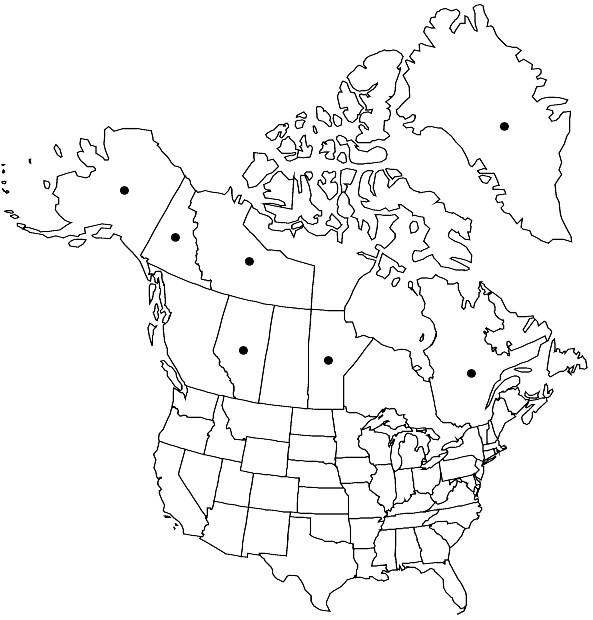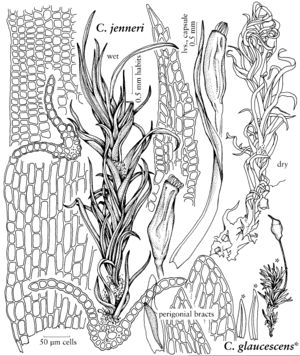Cynodontium glaucescens
Actes Soc. Linn. Bordeaux, sér. 5, 6: 306. 1894,.
Stems ca. 0.5 cm. Leaves 1–1.2 mm, broadly lanceolate, mostly bluntly rounded at the tips to broadly acute; leaf margins broadly recurved often to near the apex, 1-stratose; laminal cells essentially smooth, somewhat mammillose-papillose on the margins with a single mammilla per cell, more strongly mammillose-papillose at the leaf apex, with thick walls, firm, rounded at the angles, distal cells around 10 µm wide. Perigonium short-stalked. Seta to 0.7 cm, straight wet or dry. Capsule symmetrical, erect, struma small but conspicuous; annulus weakly developed, adherent.
Phenology: Capsules mature summer.
Habitat: Rock crevices, tundra hummocks, soil banks, both acid and calcareous substrates
Elevation: moderate to high elevations
Distribution

Greenland, Alta., Man., N.W.T., Que., Yukon, Alaska, Asia (Siberia)
Discussion
Cynodontium glaucescens is separated from C. schisti and C. alpestre by less strongly mammillose-papillose leaves, and laminal cell walls decidedly thicker. The species was reported for North America by W. C. Steere (1977, 1978) and C. D. Bird et al. (1977); a synopsis and complete list of specimens throughout its range was presented by G. S. Mogensen and Steere (1979).
